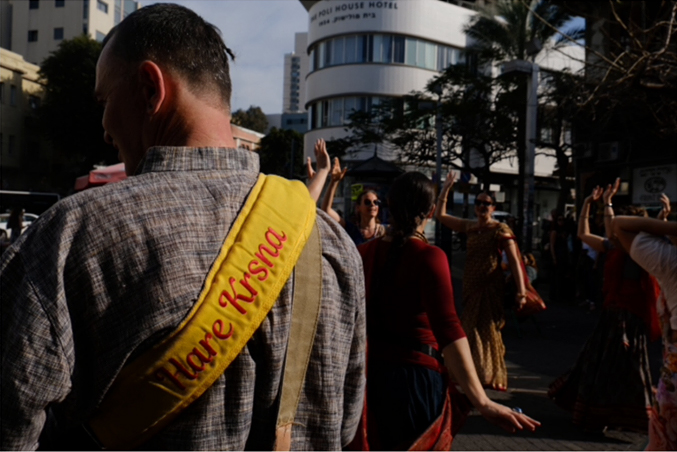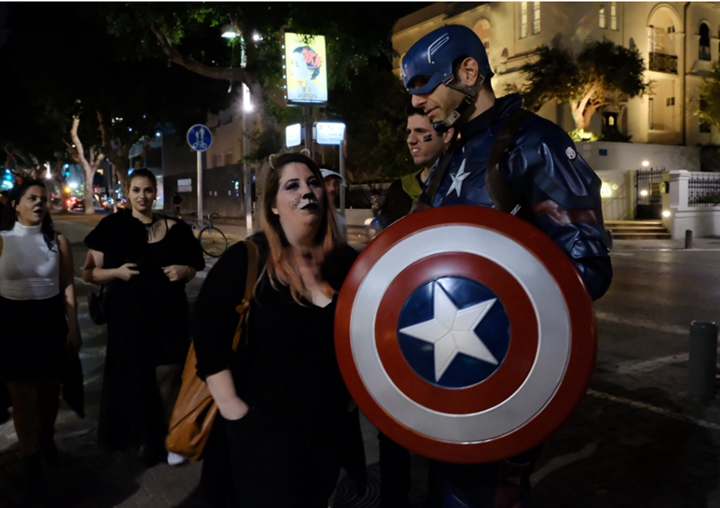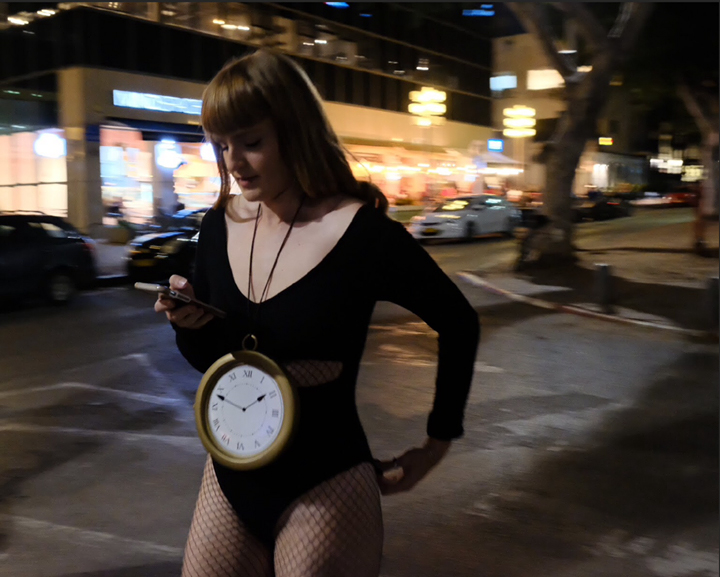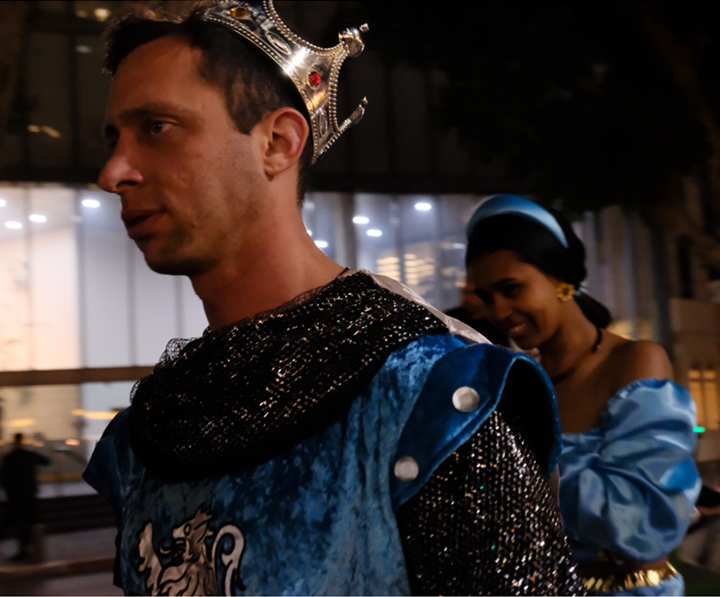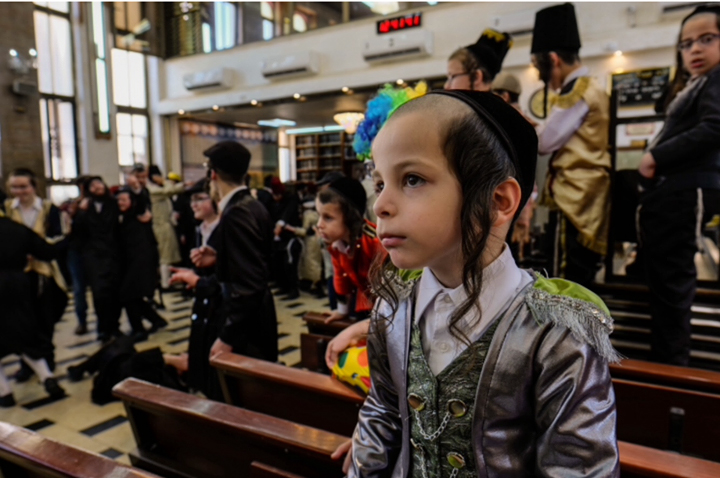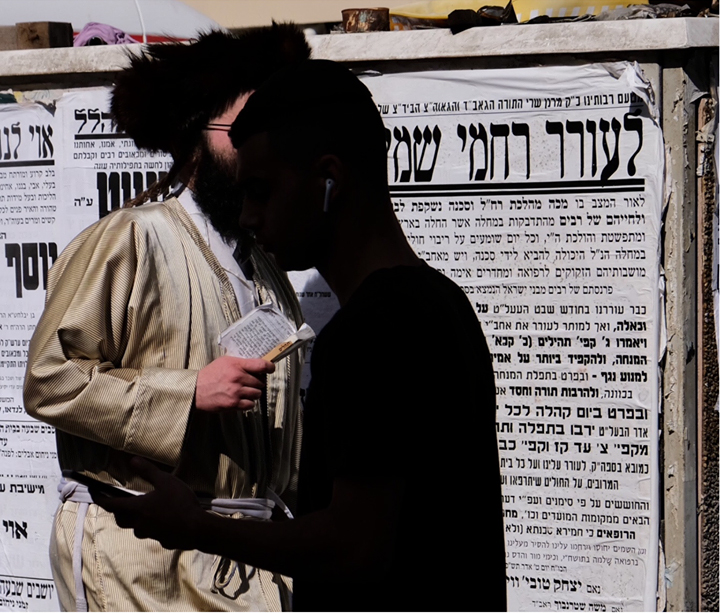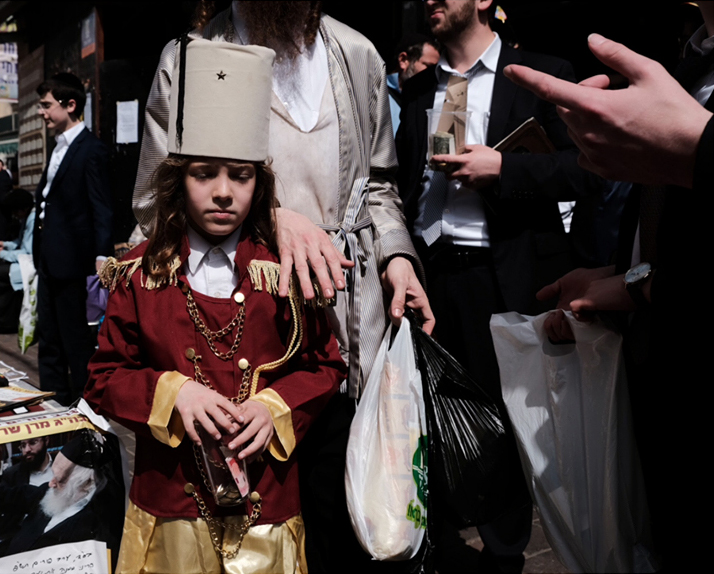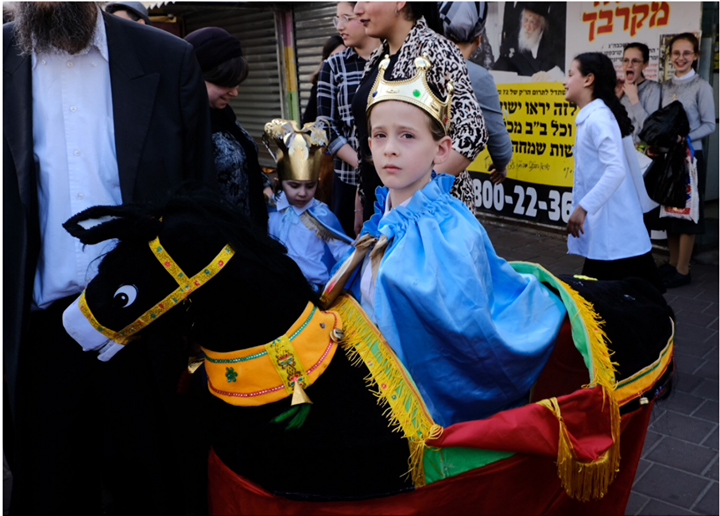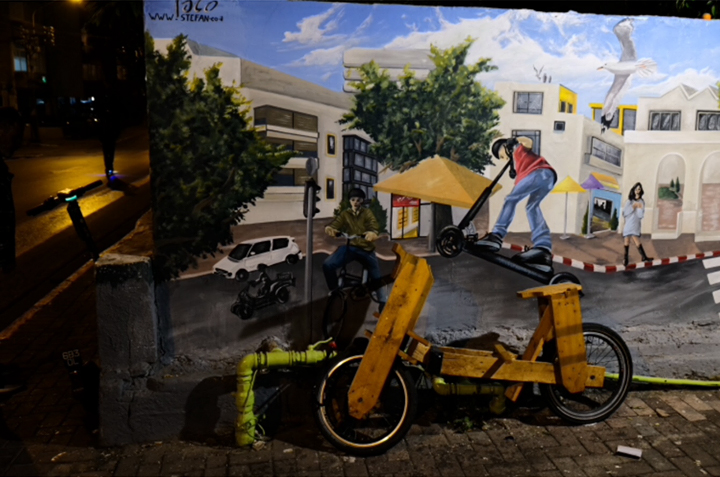PHOTO:Alexander Voutsas-Purim
 The latest trip I took was to Israel, so that I may photograph the festivities of Purim (a Jewish religious holiday), for the second year running. Once I boarded the plane, I noticed that Stefanos Tsitsipas (the popular Greek tennis player) was on the cover of the airline’s magazine. The magazine’s title was B-L-U- with the last letter covered by Stefano’s face. I curiously glanced down the aisle to get a photographic impression from my seat in 27C. The back side of each seat held the airline magazine and Stefano’s image, all in an impressive array. I decided, then, to make a few photo images. My photographic journey in Israel for 2020 had just commenced. Purim is a Jewish holiday which commemorates the saving the Jewish people from Haman, the royal vizier to Persian King Xerxes or Artaxerxes (Khshayarsha and Artakhsher in Old Persian), dated back in the 5th century BC, as it is recounted in the Book of Esther. The word pur in Hebrew means ‘lot’, perhaps related to Akkadian puru (the oldest Hebrew language dating back to 3500 BC, with dialects in Assyrian and Babylonian), which means stone or urn. The purim celebration, thus, is also called The Festival of Lots. The commemoration of their deliverance is celebrated by feasting, rejoicing, wine/alcohol drinking, as well as sending portions of food to one another and gifts to the poor. Parades are also popular. The public recitation of the megillah, from the Book of Esther is customary, usually in synagogues. Most cities celebrate Purim on the 14th day of the Hebrew month Adar. Only Jerusalem and a few other cities celebrate Purim on the 15th day. During my stay in Israel I noticed that there seemed to have been a blurriness in the air. Even though festivities were held for Purim, the idea of the corona virus created a noticeable dampener. The presence of alternative faiths, beliefs, hope and bewilderment, song and dance were all there to counterbalance the forthcoming “cloud”. The idea of the strong, exemplary hero had been transformed into an ordinary, yet sociable citizen. The “wheeziing” of time going by appeared to be more prevalent than usual. The ordinary citizen had “mascaraded” himself to an archon/king, a role he could not play in real life, yet lived in the fantasy of being a “petit Dieu”, just in case he/she was able to escape reality. And then the uncanny seriousness of a youth, who perhaps had the insight to concentrate on the seriousness of any given situation, let alone a religious one. It is the youth’s focused, undistracted look in his eyes which suggests that maybe one should be more inquisitive and proof-generating, instead of being comfortably gullible. In times of uncertainty, where the ‘unfamiliar’ reigns, it is not a shame to reach out and ask for a helping hand. Instead of pleading “my kingdom for a horse”, maybe one should confront the current circumstances and just pronounce: “a horse for my wellbeing”. It might be easier then, to distinguish truth from utopia, yet pay attention to whichever might be chosen. Before March 2020 came along, everything seemed to function in a normal manner-getting up in the morning, having breakfast, going to work, mingling with people, running errands and paying bills, being entertained, spending time with family and loved ones. All of a sudden, just like when informed about a terminal situation, an effort has been made to retain significant things and events that have meant something in our lives; all this in an effort to assist and maintain our necessary memory, which may perhaps justify part of our existence. My thoughts took me back to the airline magazine, with Stefano’sc face blocking the last letter of its title. So I asked myself:
The latest trip I took was to Israel, so that I may photograph the festivities of Purim (a Jewish religious holiday), for the second year running. Once I boarded the plane, I noticed that Stefanos Tsitsipas (the popular Greek tennis player) was on the cover of the airline’s magazine. The magazine’s title was B-L-U- with the last letter covered by Stefano’s face. I curiously glanced down the aisle to get a photographic impression from my seat in 27C. The back side of each seat held the airline magazine and Stefano’s image, all in an impressive array. I decided, then, to make a few photo images. My photographic journey in Israel for 2020 had just commenced. Purim is a Jewish holiday which commemorates the saving the Jewish people from Haman, the royal vizier to Persian King Xerxes or Artaxerxes (Khshayarsha and Artakhsher in Old Persian), dated back in the 5th century BC, as it is recounted in the Book of Esther. The word pur in Hebrew means ‘lot’, perhaps related to Akkadian puru (the oldest Hebrew language dating back to 3500 BC, with dialects in Assyrian and Babylonian), which means stone or urn. The purim celebration, thus, is also called The Festival of Lots. The commemoration of their deliverance is celebrated by feasting, rejoicing, wine/alcohol drinking, as well as sending portions of food to one another and gifts to the poor. Parades are also popular. The public recitation of the megillah, from the Book of Esther is customary, usually in synagogues. Most cities celebrate Purim on the 14th day of the Hebrew month Adar. Only Jerusalem and a few other cities celebrate Purim on the 15th day. During my stay in Israel I noticed that there seemed to have been a blurriness in the air. Even though festivities were held for Purim, the idea of the corona virus created a noticeable dampener. The presence of alternative faiths, beliefs, hope and bewilderment, song and dance were all there to counterbalance the forthcoming “cloud”. The idea of the strong, exemplary hero had been transformed into an ordinary, yet sociable citizen. The “wheeziing” of time going by appeared to be more prevalent than usual. The ordinary citizen had “mascaraded” himself to an archon/king, a role he could not play in real life, yet lived in the fantasy of being a “petit Dieu”, just in case he/she was able to escape reality. And then the uncanny seriousness of a youth, who perhaps had the insight to concentrate on the seriousness of any given situation, let alone a religious one. It is the youth’s focused, undistracted look in his eyes which suggests that maybe one should be more inquisitive and proof-generating, instead of being comfortably gullible. In times of uncertainty, where the ‘unfamiliar’ reigns, it is not a shame to reach out and ask for a helping hand. Instead of pleading “my kingdom for a horse”, maybe one should confront the current circumstances and just pronounce: “a horse for my wellbeing”. It might be easier then, to distinguish truth from utopia, yet pay attention to whichever might be chosen. Before March 2020 came along, everything seemed to function in a normal manner-getting up in the morning, having breakfast, going to work, mingling with people, running errands and paying bills, being entertained, spending time with family and loved ones. All of a sudden, just like when informed about a terminal situation, an effort has been made to retain significant things and events that have meant something in our lives; all this in an effort to assist and maintain our necessary memory, which may perhaps justify part of our existence. My thoughts took me back to the airline magazine, with Stefano’sc face blocking the last letter of its title. So I asked myself:
Was it B-L-U-E or was it B-L-U-R ?-Alexander Voutsas
CV: Alexander Voutsas was born in Manhattan, New York, in 1961. He earned a Bachelor of Science, Marketing / Management from Sienna College (1983), Loudonville, New York; Bachelors of Arts, Professional Photographic Illustration, Rochester Institute of Technology (R.I.T), Rochester, N.Y(1987); Masters of Science Printing Sciences / Management, R.I.T (1991). His thesis title was «The effects of blanket tension and squeeze pressure on slur and doubling, using conventional and compressible blankets, in sheet fed offset lithography». For further reading: https://scholarworks.rit.edu/theses/3776/. He is a faculty member at the Athens School of Fine Arts (ASFA) where he has been teaching photography since 2000, while has also taught photography at Athens College (high school) and at the Leica Academy, in Athens. He has had seven solo exhibitions and has participated in more than thirty group shows. In the past two years he has participated, among others in: “Die Kunst ist ein Ausweg bei sexuellen problemen” (art is a solution to sexual problems), Sigmund Freud Dream Museum, St. Petersburg, Russia (2018), PLATFORMS PROJECT 2019, Athens School of Fine Arts (2019), the CIP Festival (Chania International Photography Festival, 2019), “Athens International Airport”, solo exhibition at the Chania Municipal Gallery, Chania, Crete (2017). Alexander curated the photography exhibition titled “ALLOWED”, at the EOS gallery (Athens), in December 2019. He is a FUJIFILM X-Photographer (Greece) and has published two photography books: “Meeting Points” (2008) and “RODOPOU” (1993).
